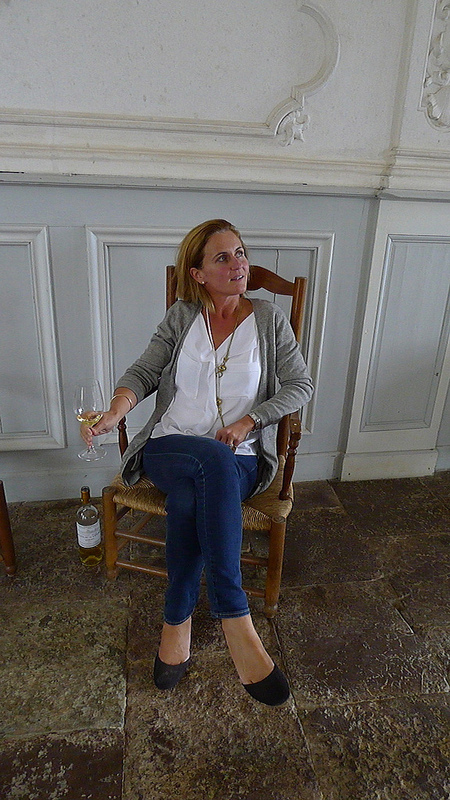
Caroline Perromat at home in Château Cérons, Bordeaux
So I’m guessing that you have heard of the sweet wines of Sauternes, right?
Barsac, yes?
Loupiac, perhaps?
But have you heard of Cérons?
The tiny appellation of Cérons is located within the Graves region, in the southwest of France, nestled beside the rather more well known sweet wine appellations listed above, and is the home to Caroline Perromat, who along with her husband Xavier makes wine at Château de Cérons. We sat down with her last week at her home/winery to find out a little more about this fascinating region.
Good Food Revolution: Hello Caroline, we are most happy to be here at your rather lovely Château. Please tell our readers something about where we are geographically right now?
Caroline Perromat: Château de Cérons is 35 km south of Bordeaux, on the left bank, overlooking the Garonne River.
Cérons is a village of 1800 people and has the privilege to be also an” Appelation”
GFR: And what kind of grape varietals do you grow at Chateau de Cérons?
CP: The vineyard of Château de Cérons is composed of: 50% white Grape varieties: Sémilion, Sauvignon and Muscadelle and 50% red Grape varieties: Cabernet Sauvignon and Merlot
GFR: What soil types are we talking about in Cérons?
CP: We speak about mixed gravel soil with sand and small stones resting upon a subsoil of oceanic limestone.
GFR: And how would you describe the climate?
CP: The Bordeaux region has an oceanic climate, with temperate summers and winters:a limited range of temperatures and low risk of frost.
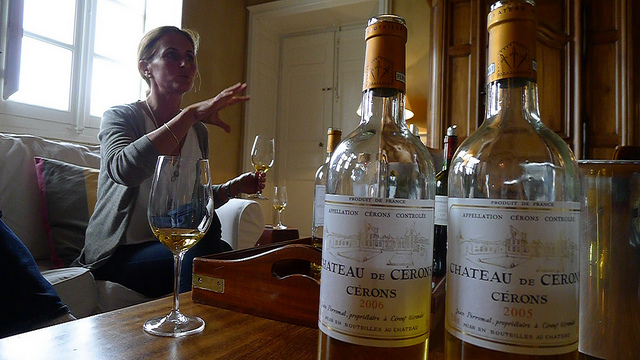
Tasting some older vintages of Château Cérons.
GFR: What makes your dry white and red wines different from those of other Graves wines?
CP: The subsoil of limestone gives a very specific character to the wines. It keeps the freshness of the fruit, and a very pure aromatic palette. My husband Xavier is focused on keeping this specificity to his wines by using cold- maceration & fermentation and starting fermentation in a smoother way.
GFR: And how do your sweet wines, labelled under the Cérons appeallation, differ from those of the neighbouring, and more well known, Sauternes and Barsac?
CP: Cérons is one of the smallest appellation of Bordeaux with 55 hectares. It’s a confidential appellation. Cérons gave its name to the Ciron river which offers the opportunity to produce Sauternes, Barsac and Cérons Wines. As the vineyard of Cérons is planted on limestone subsoil, the wines are characterized by an extraordinary freshness, combining notes of citrus fruit, candied orange peel, plums with spicy and floral notes. Cérons reflects an ideal balance between traditional and modern taste, less sweet and heavy as the traditional Sauternes wines.
GFR: What do you mean by “confidential”?
CP: It’s like a secret, the winemaker produces these wines secretly, and it is sold to people who discover these wines by word of mouth…
GFR: Why do you feel that Cérons is such an undiscovered appellation?
CP: Because it’s a very small appellation with a tiny production (1% of all the production of sweet wines in Bordeaux area).
Cérons has the advantage of belonging to the Grave appellation unlike Sauternes et Barsac. It offers the possibility to produce dry white GRAVES with the same vines if the winemaker decides to pick the grapes at great maturity in September, or CERONS wines, if he takes the risk to pick the grapes between September and the end of october, in several sortings to reach the desired concentration of the juice.
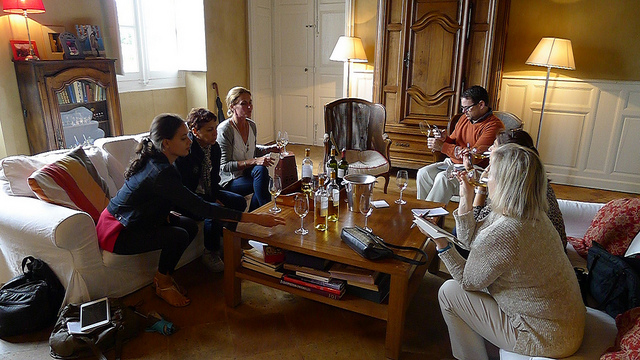
It was the very first taste of the Cérons appellation for all assembled.
GFR: When it comes to both viticulture and vinification, would you say you were traditionalists?
CP: Every vintage is so different! We work on a traditional way with a young team of consultant, but have to adapt our methods to the vintages and their specificities. It’s a mix of wine-making traditions and modern vinification methods, modern means for us precision.
GFR: Is organic and/or biodynamic grape growing an option in this region? What are the greatest challenges you face in the vineyard?
CP: Organic or biodynamic methods depend on the will of the winemaker. The Oceanic Climat does not facilitate the task. We are hard working on the protection of the soils without the use of herbicides, only by ploughing. We take care of any risk of pollution even in the vineyard but also in the cellar. We are hard working on this way.
GFR: Both your husband Xavier and yourself come from a winemaking background?
CP: My husband’s family has produced wines in Cérons for 6 generations.
Xavier has been involved in Chateau de Cérons for 30 years. I was a medical student when I met Xavier. I started to study oenology when our fourth child went to school!
GFR: I think I noticed your daughters working around the estate… so it’s a family affair then?
CP: Our children continue studying in different directions,: international relations, medical, architecture, and marketing. They left the château quite early. Today, Cérons is our story with Xavier. They will be warmly welcome if they make the decision to return.
GFR: When it comes to longevity, how do you rate your range of wines?
CP: The Cérons sweet wines are immortal. We just had a tasting of the last 20 vintages composing our Collection of Chateau de Cérons. The wines are sublime…
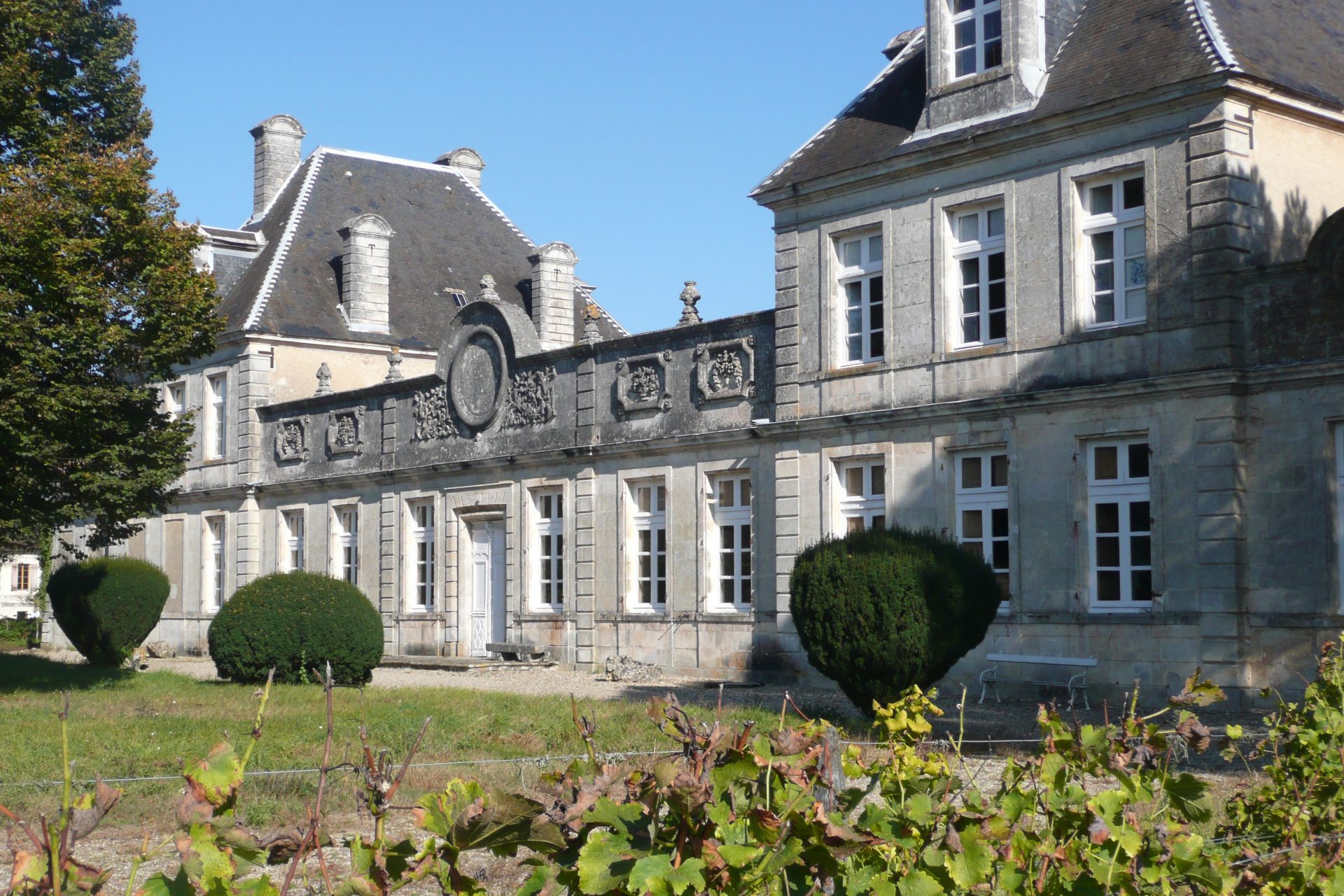
The exterior of the picturesque Château Cérons, Bordeaux.
GFR: The property itself is quite grand architecturally, and has a very interesting history. Please tell us a little about the Chateau itself?
CP: Built at the beginning of the 18th century, Chateau de Cérons was the residence of the Marquis de Calvimont, a political and military family from Normandy.The Duc de Richelieu, Minister of Louis XV and Governor of Guyenne in 1770, used to come to Chateau de Cérons, as it was one of his favourite residences.
In 1850, before the 1855th classification, Charles Cocks, in his pre- classification of Bordeaux wines, distinguished Chateau de Cérons among the great wines of Sauternes. Roger-Henri Expert a famous architect in 1950th, stayed there with his family who owned the vineyard
It was a viticultural building from the very beginning. There is a vinification cellar exposed to the south to maintain a warm temperature during the fermentations, and there is an ageing cellar oriented to the north, designed to stay at a cool and constant temperature during the all year.
It was a technical architecture based on common sense and training.
GFR: I believe that you also have another property, Château du Mayne?
CP: It belongs to Xavier’s father. Chateau du Mayne is a family estate. We are in charge of the vinification and the distribution of the wines.
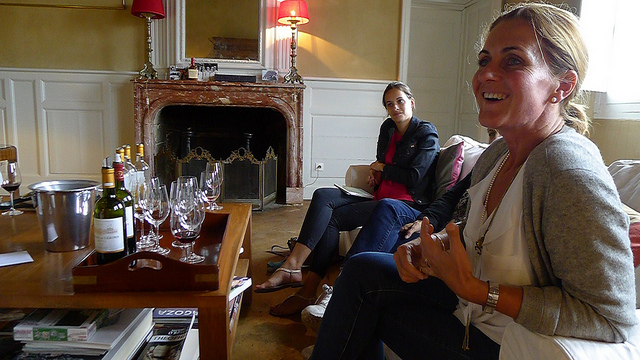
As well as making some superb wines, Caroline Perromat is also the consummate host.
GFR: When it comes to the perfect food matches with your wines, what would you suggest? Both local traditional pairings and beyond?
CP: With the Chateau de Cérons Dry white; See food, oysters, scallops, grilled fishes, See Bass, Monkfish, Sole, Cheese, Vieux Comté 36 months. Aged mountain cheese.
With the Chateau de Cérons Red: Because of the precision of the aromas in the Chateau de Cérons, you can match the wines with lot of elegant food, grilled Entrecote, Veal with light mushroom sauces, mountain cheese, red fruits desserts…
Cérons, I love to open a fresh bottle of Cérons for the aperitif just as one would with a Champagne… very fresh with nice small toast made with Foie gras on grilled bread of course, but also Lobster and fresh exotic fruits, fresh figs, Blue cheese with subtle slices of pears. You can try anything, but you have to find a “bridge” when you match the Cérons wines with food. The bridge is even the freshness, or light touches of salt, light touches of sugar… Just try!
GFR: What percentage of your wines are consumed domestically?
CP: 50%
GFR: And where are your export markets right now?
CP: The USA, the UK, Belgium, Japan, and Germany
GFR: Where do you see the future of the Cérons appellation in the coming years?
CP: I’m sure we will all contribute to increase the reputation of Cérons Appellation with tasting reports, new markets etc. It’s an inestimable treasure.
GFR: Caroline, thank you so much for your hospitality at Chateau de Cérons.
…
 Edinburgh-born/Toronto-based Sommelier, consultant, writer, judge, and educator Jamie Drummond is the Director of Programs/Editor of Good Food Revolution… And he found something quite extraordinarily beautiful in the sweet wines of Cérons.
Edinburgh-born/Toronto-based Sommelier, consultant, writer, judge, and educator Jamie Drummond is the Director of Programs/Editor of Good Food Revolution… And he found something quite extraordinarily beautiful in the sweet wines of Cérons.



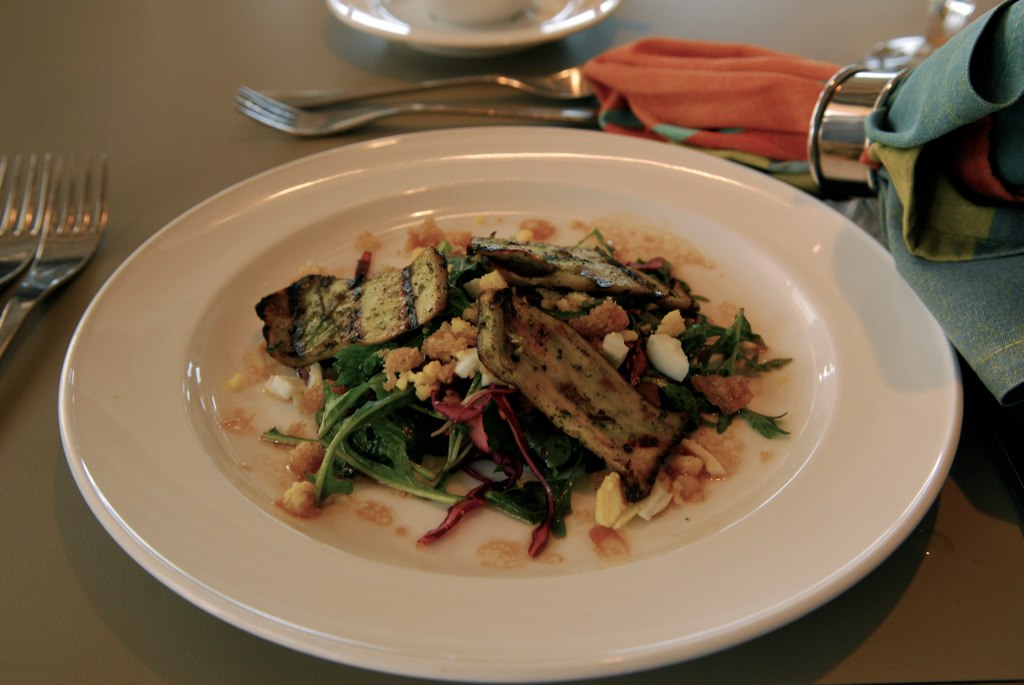
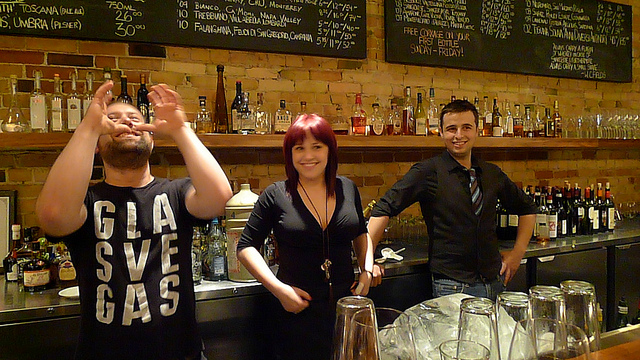
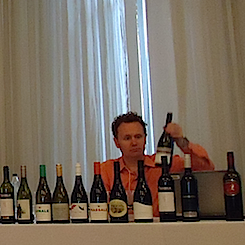
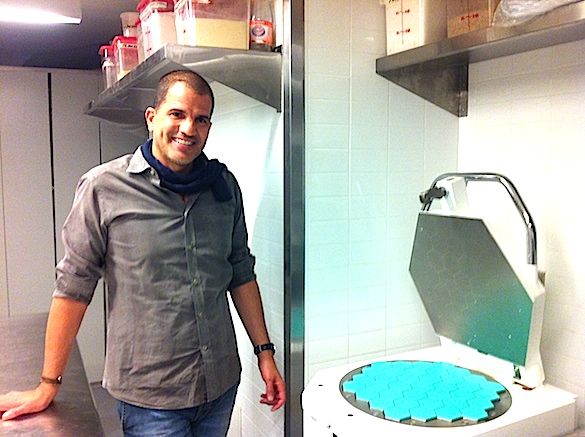

Just heading to cerons from bordeaux for a privet off the beaten path tour with the owners. Looking forward to it.